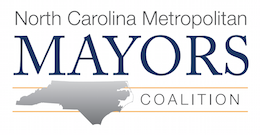Mecklenburg County lags in share of stimulus (Charlotte Observer)
N.C.'s largest county ranks near the bottom in spending per person
By Steve Harrison
[email protected]
North Carolina's stimulus checkbook shows that rural counties have benefited more than urban counties, on a per-person basis, with Mecklenburg's share lagging.
Mecklenburg has so far received $246 per person in federal stimulus dollars, compared with $328 per person statewide.
The one urban county to do exceptionally well is Cumberland County, home to Fayetteville and Fort Bragg. The Department of Defense has poured money into the Army base, pushing Cumberland's per-person total to $816.
Local officials are still chasing millions in stimulus grants, but some are frustrated.
“This is a nationwide trend on how the money was divvied up – everyone is getting a little bit, and in the end there will be nothing to show for it,” said Charlotte Mayor Pat McCrory, a Republican. “We should have spent it in Eisenhower- and Roosevelt-type projects for the next generation.”
Mecklenburg's low per-capita share is due to a number of factors.
Many of the stimulus dollars are being distributed by existing state formulas, some of which favor rural over urban counties. Mecklenburg has received only $8.9 million in grants – out of $409 million – distributed by federal agencies.
Dempsey Benton, who oversees N.C. stimulus spending, said there are some pots of money that are difficult for Mecklenburg to access. The Department of the Interior, for instance, has so far spent $12.3 million in North Carolina – mostly in coastal counties, and none in Mecklenburg.
“The Department of the Interior is spending money in the mountains and in the coasts,” Benton said. “That's not going to help the Mecklenburgs and the Guilfords.”
The N.C. Office of Economic Recovery and Investment, created to handle stimulus money, last week released a county-by-county breakdown of stimulus allocations through June 30. It has allocated $3.2 billion through June, and the state estimates it's spent $1.3 billion.
The state expects to receive $8.2 billion.
The stimulus, designed to jump-start the economy and improve the nation's infrastructure, includes money for construction projects such as roads and weatherizing buildings, and also assistance payments for food stamps and school systems.
As unemployment nationwide has hit 9.5 percent, a 26-year high, Republicans have criticized the stimulus as ineffective. One problem has been that money hasn't been spent as fast as the Obama administration hoped.
Benton said there has been a longer than expected lag time in federal agencies issuing rules as to how the money has been spent. But he said North Carolina is moving quickly to spend the money, and that it's above average among states in getting money on the street.
Mecklenburg has so far been allocated $219 million. The county has struggled accessing some of the biggest pots of money.
The Charlotte Area Transit System carries more than 33 percent of the transit passengers statewide, but a state formula gave it 21 percent – $20.8 million – of the transit money parceled out statewide. CATS plans to use the money to refurbish a bus maintenance garage on North Davidson Street.
Mecklenburg has been shortchanged in highway dollars, due to the state's equity formula, which the N.C. Department of Transportation secretary Gene Conti said penalizes urban areas.
Mecklenburg has so far received $37.3 million in stimulus money for roads and bridges, for projects such as widening N.C. 51 south of Pineville, improving a traffic signal system in Charlotte and widening N.C. 73 in Huntersville. The Department of Transportation's office overseeing the Charlotte area distributed the highway money and chose to spend some money in neighboring counties like Anson, Union, Cabarrus and Stanly.
By contract, the DOT office overseeing five counties in central N.C. chose to spend all of its stimulus highway dollars – $64 million – in Fayetteville. That will help build part of the city's outerbelt.
Mecklenburg has struggled accessing the third-largest pot of stimulus money – grants from federal agencies.
Charlotte/Douglas International Airport didn't get $2 million in funding for runway repairs from the FAA. No Charlotte federal buildings have received money to become environmentally friendly. The U.S. Army Corps of Engineers has bypassed Mecklenburg.
Cumberland, by contrast, is benefiting from $117.5 million in defense grants to Fort Bragg and Pope Air Force Base. The money will be spent on more than 70 mostly small projects, such as paving roads, improving barracks and making buildings more energy efficient.
Cumberland's unemployment rate is 9.3 percent; Mecklenburg's is 11 percent.
The state has so far used $126 million in “education stabilization” funds to help universities and community colleges pay their bills. Mecklenburg has received $7.8 million for UNC Charlotte and Central Piedmont Community College. Orange County, home to UNC Chapel Hill, has received $20 million and Wake County, home of N.C. State, has received $15.8 million.
Charlotte-Mecklenburg Schools' share of stimulus dollars has more closely matched the county's population, but one state budget proposal would reduce state money to CMS by the same amount.
Charlotte assistant city manager Ron Kimble said the city is so far pleased with how much money it's received. But the city has a team to apply for competitive stimulus dollars.
The city is seeking nearly $26 million to hire 150 police officers, $8 million to buy 11 hybrid buses and $20 million to buy 200 foreclosed homes.
There is still the possibility the stimulus will produce the type of large, long-lasting project McCrory wants.
The N.C. DOT hopes to use stimulus money to improve rail service between Charlotte and Raleigh, increasing speeds up to 110 mph. The state is also applying for a special stimulus fund to replace the Interstate 85 Yadkin River bridge.

Dollars Per Person
Staff writer Ann Doss Helms contributed.


